How to plant fava beans – 3 ways to maximize your chances of a successful crop
Discover how and when to plant fava beans both indoors and outdoors
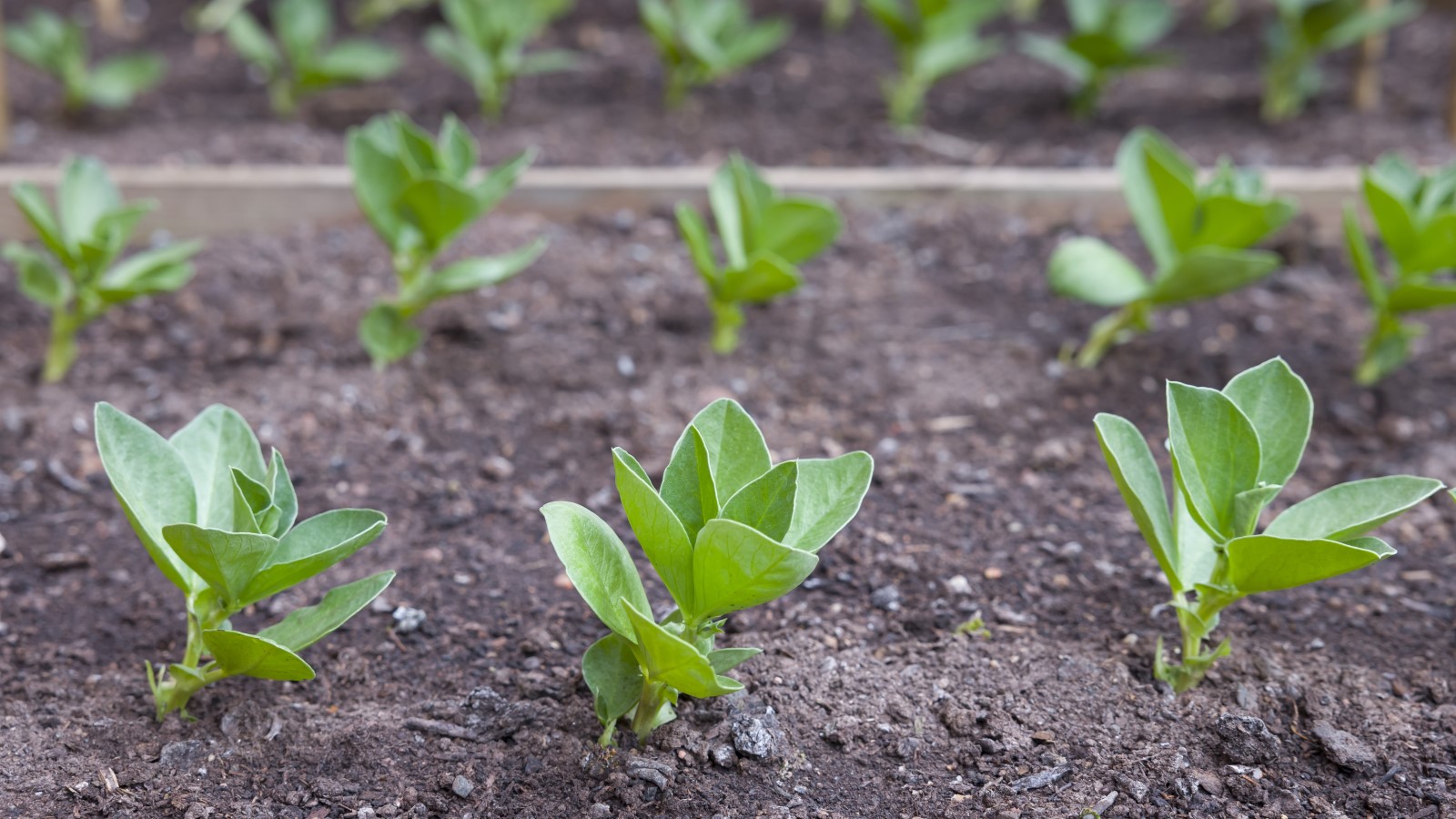

Fava beans, also known as broad beans, are a delicious crop that comes in various sizes and colors. It is a plant that gives you a multitude of options for when and how to plant it – and all are very simple.
Fava beans can be planted either in fall, winter or spring. They can be sown directly into the ground or started indoors and planted out when the weather improves. When planning how to grow fava beans you can take advantage by combining two, or even three, of these planting methods to extend the season and enjoy beans for longer.
During my time as a gardener, I grew lots of fava beans. It was a staple crop in my kitchen gardens and many varieties were planted. I always found it a thoroughly rewarding crop to grow and harvest. I even grew some fava beans specifically for the flowers, which chefs I supplied used to garnish plates in their restaurant.
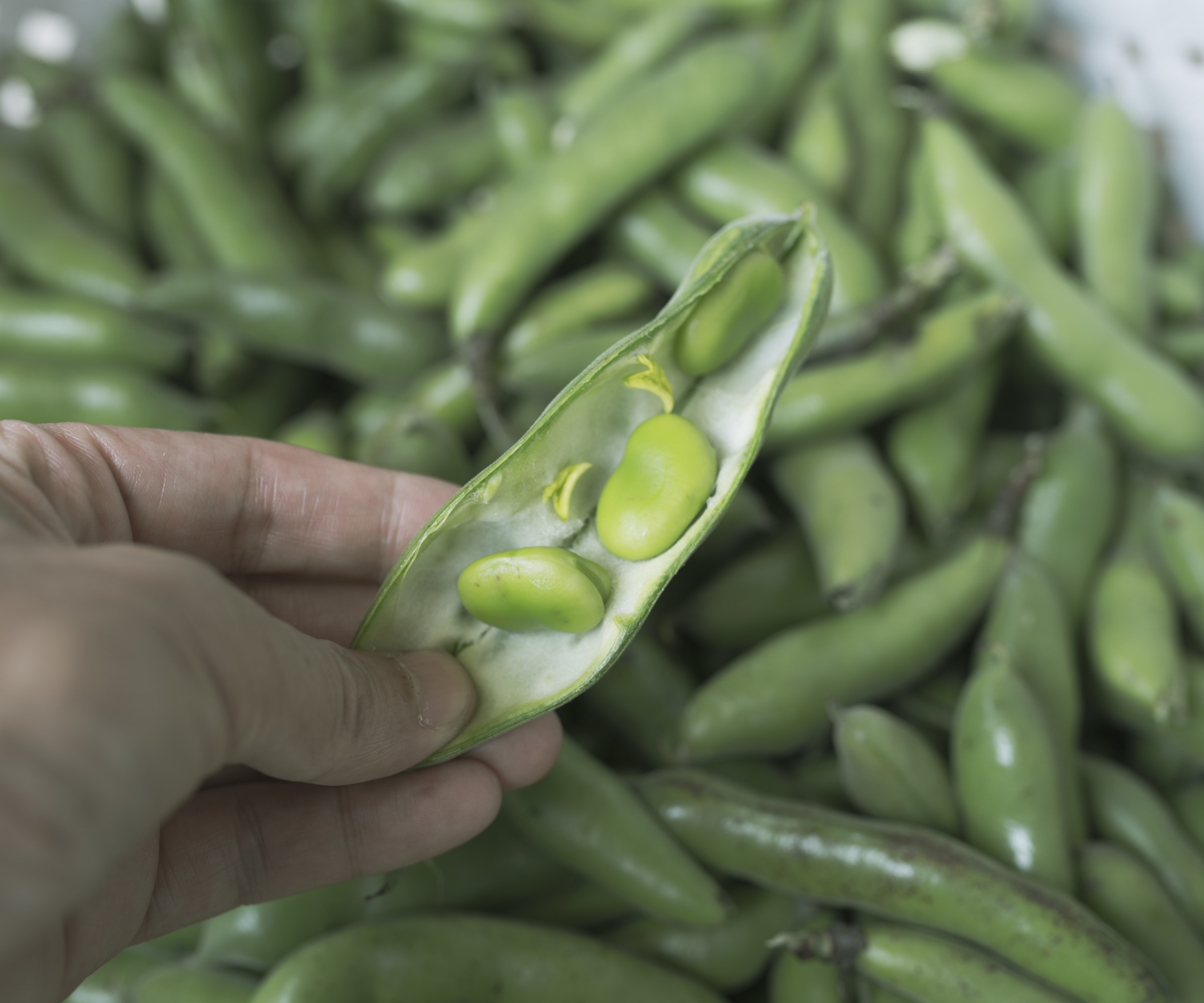
Fava beans are a low-maintenance crop to grow

Drew is a former professional gardener who specialized as a kitchen gardener growing vegetables, fruit and herbs. He worked in several kitchen gardens and managed a historic productive walled garden that supplied a range of edibles year-round to chefs at a local restaurant.
When to plant fava beans
Hardier varieties of fava beans can be planted directly into their growing site in late fall for the earliest crops come late spring. When planning your kitchen garden, sowing in fall can be a bit of a gamble as the seeds can rot in the ground in wet winters and rodents are liable to eat the precious seeds. Fall sowings are more suitable for milder areas and the most recommended variety of fava bean for fall planting is ‘Aquadulce Claudia’, commonly sold just under the name ‘Aquadulce’, such as these ones from Amazon.
Crops can also be grown indoors in seed trays or modules from early to mid-winter and then planted out in spring. Fava beans can germinate at temperatures as low as 40˚F, however, for optimal growing they should be germinated at a minimum of 50˚F either undercover or in cold frames. Any plants raised indoors can then be planted out into their final growing site in spring.
Finally, fava bean seeds can be planted outdoors from late winter. The crop can withstand a light frost and is capable of being sown directly into the vegetable garden as soon as the soil can be worked. The fava beans can go into the ground a month before the last frost, possibly up to seven weeks before if they are protected from frost with cloches or row covers.
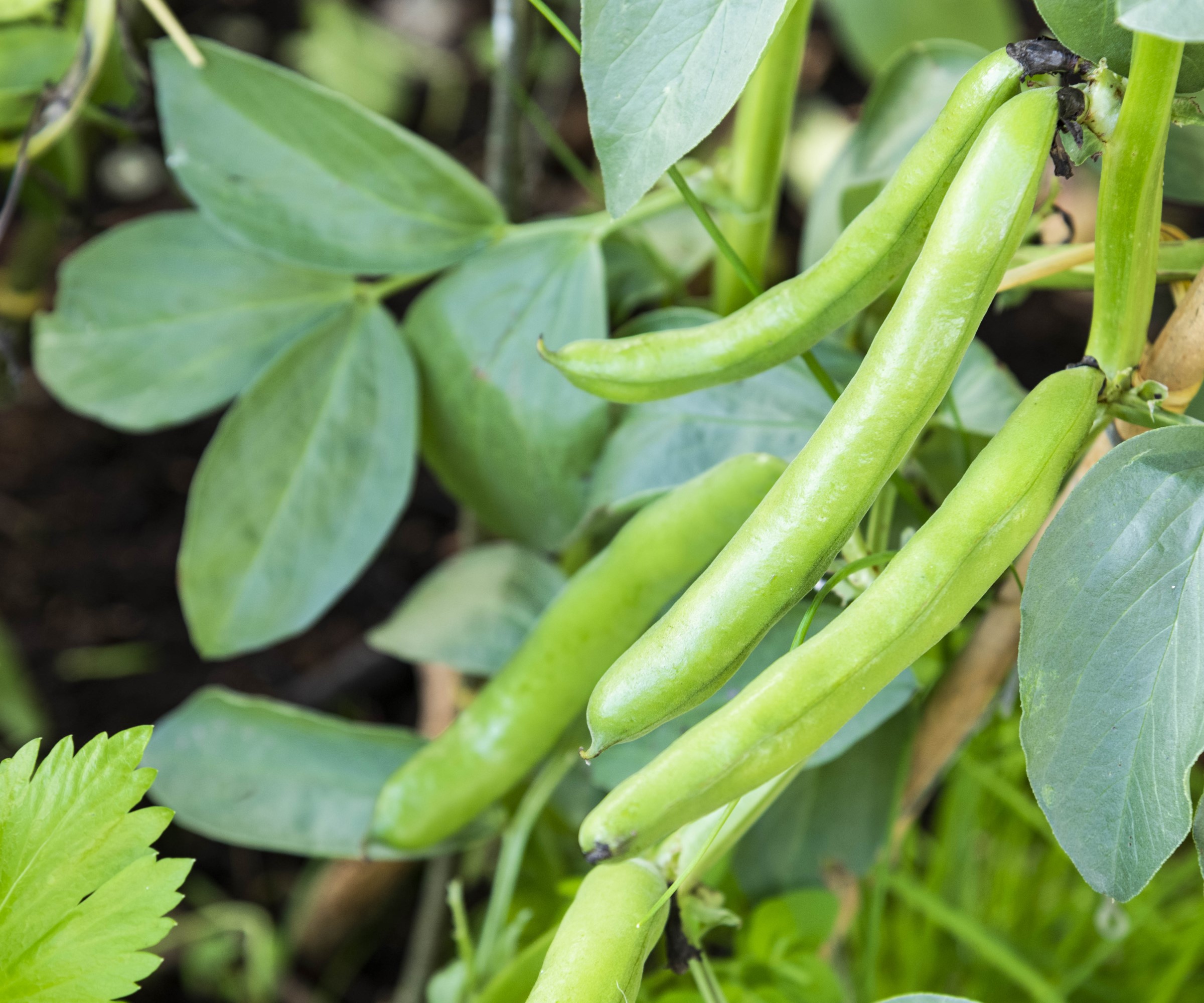
Young fava beans can be eaten whole
How to plant fava bean seeds indoors and outdoors
Fava bean seeds can be sown into trays or modules indoors earlier in the year, such as in a greenhouse, polytunnel or cold frame. Modules need to be of a good size, such as these extra large cell trays from Amazon, as beans grow quickly and put out strong roots. Growing in large modules means the plants can go straight from the trays into the ground.
Sow one bean seed per module or space them evenly around a tray. Gently push the bean into the soil two inches deep on its edge and keep moist.
The seeds should germinate in around 10 days in optimal conditions and continue to keep them moist, but not waterlogged. Keeping the soil in the pot too wet risks the developing stem of the seedling rotting. Pot on plants, if required, when they have their first set of true leaves and grow on until they are large enough to be planted in their final position.
To direct sow the beans outdoors, create drills two inches deep and sow the beans on their edge a minimum of six inches apart. Water the drills to encourage germination and keep the area weed-free.
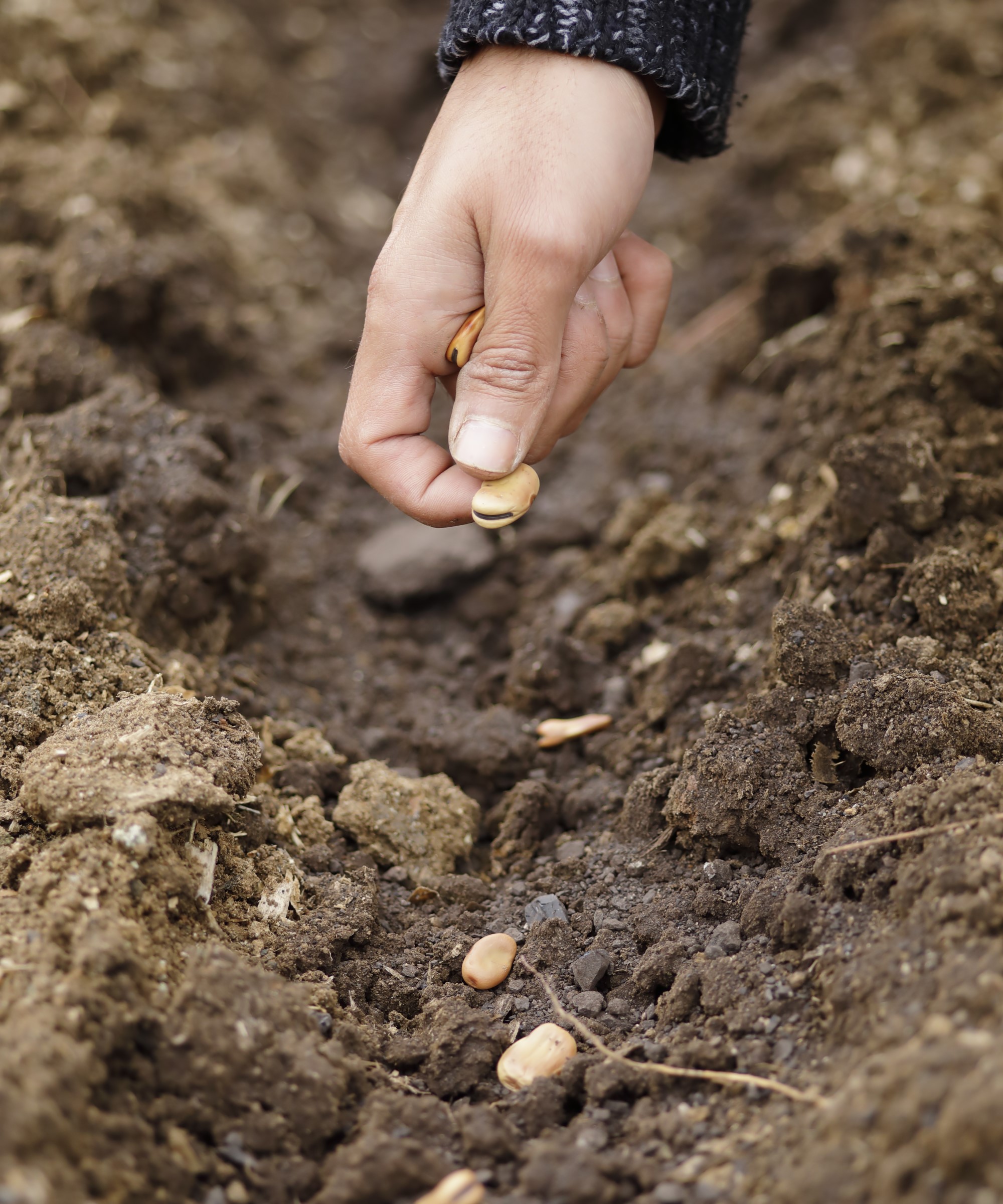
Sow seeds at least 6 inches apart
Planting out fava beans grown indoors
Fava beans started undercover in winter can be planted out into position in the spring. Ideally the plants should be around six inches tall and planted out before they become pot-bound. The plants do need to be hardened off for a few weeks to acclimatize them to the outside and ensure they are not shocked by the change in weather conditions.
Choose a site that is sunny and well-draining and plant each fava bean around nine inches apart in staggered rows – ensuring each plant is slightly offset from another. This ensures each plant – which can reach up to over four feet depending on the variety – can help support each other.
Either plant in two single rows that are 18 inches apart or double rows nine inches apart, spacing two feet between each double row. Make a generous hole wider than the size of the pot to place the fava bean plant into. Fill the hole and press the soil around it to ensure it is planted at the same height it was in the pot. Watering plants well is important, as is staking them when they are young to avoid disturbing them in the future.
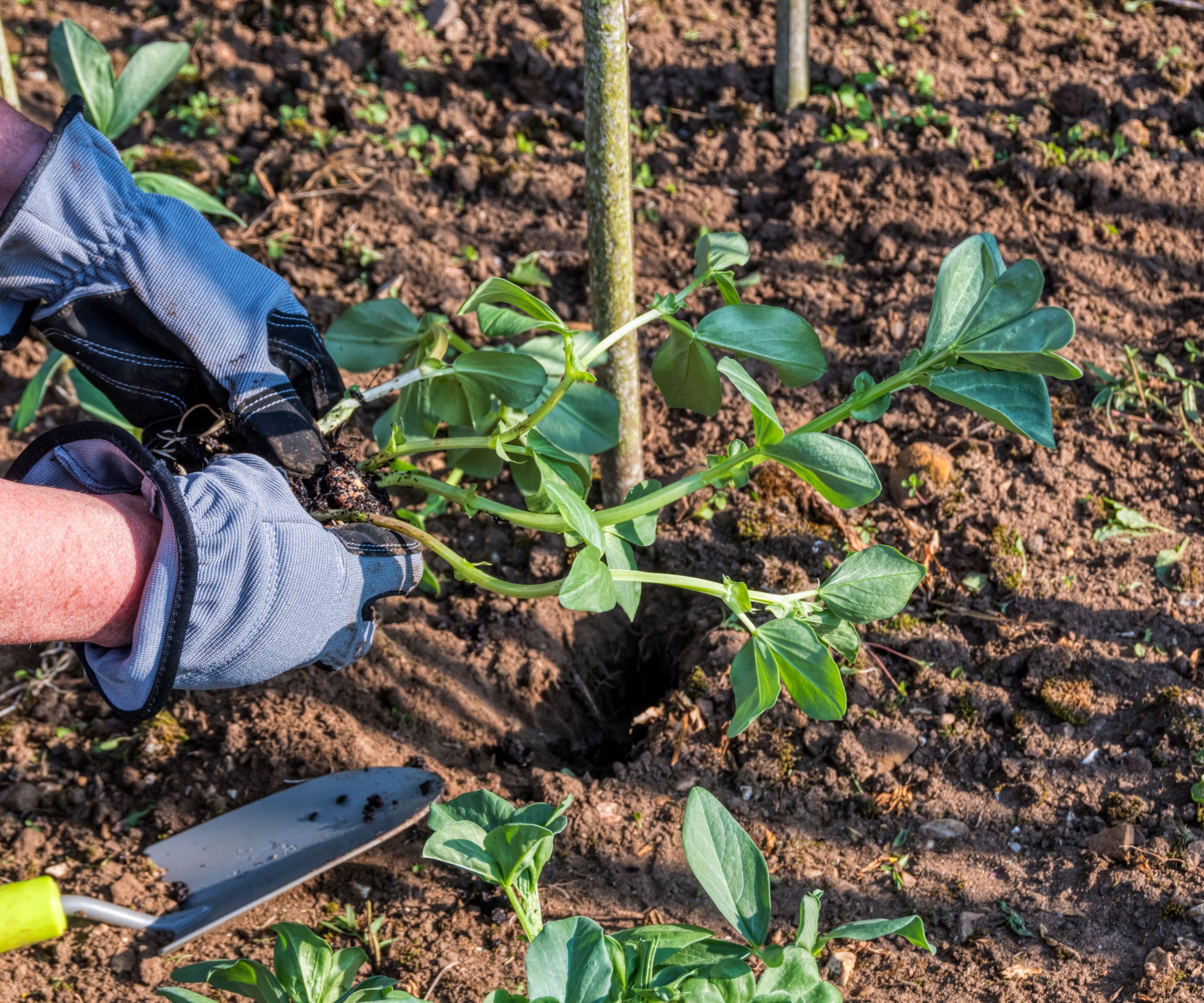
Fava beans should be firmed down when planting
Is it a risk to plant fava beans in the fall?
It can be more of a calculated gamble to plant fava beans in the fall, with the main risks being the weather and rodents. Even milder areas can have unpredictable colder snaps and wet winters can lead to seeds not germinating or rotting in your raised beds or the ground.
Anne Swithinbank, expert for Amateur Gardening, claims that fall sowings of hardy fava beans are ‘a great idea’ unless you live in an ‘exceptionally cold area’ such as in USDA zones 2-5. She adds that, as well as the cold, another issue that might impact on planting in fall is pesky rodents out looking for a winter food source.
‘If mice and voles prove troublesome, then sowing into pots, modules or seed trays enables the seeds to germinate and use up the nutritious seed reserves these rodents are after,' adds Anne.
There are ways to try to stop rodents eating seeds, including laying chicken wire or fine netting, placing spiky leaves around the area, or putting down traps. One alternative method can be sowing extra beans at the end of rows that can be sacrificial to keep rodents away from destroying the rest of the potential crop.
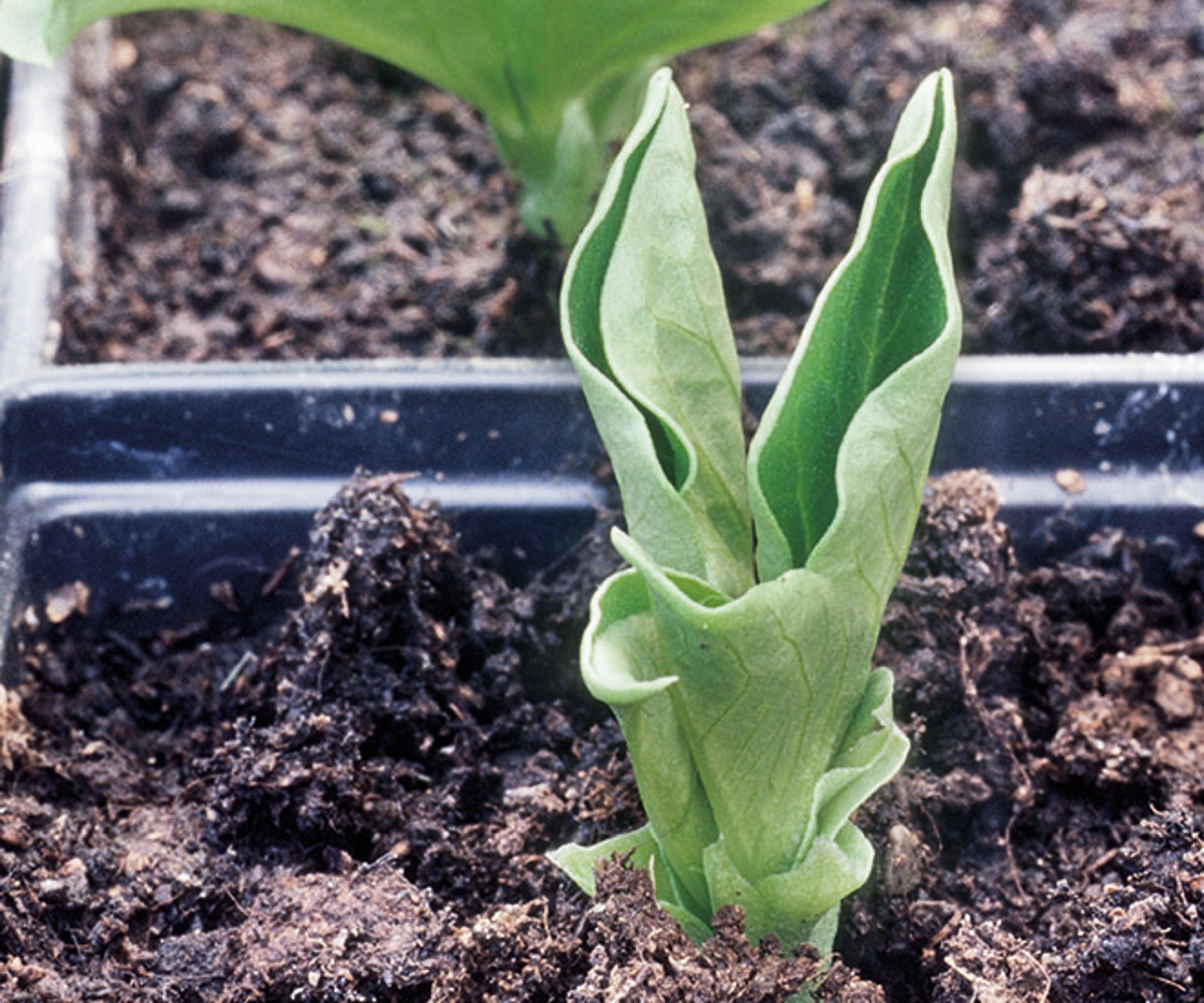
Fava beans are often planted indoors during winter
Can you plant fava beans as a cover crop?
Fava beans are a great option for a cover crop, or green manure, as they offer multiple benefits. They improve soil structure, can help get rid of weeds, attract pollinators and, as a legume, fix nitrogen in the soil. The crop can be planted from mid fall to early spring.
To plant fava beans as a cover crop, you can either use a direct drilling machine or sow by hand. A drill seeder should be set to a depth or one to two inches and, if sowing by hand, follow those same principles when making drills. For a cover crop, it is recommended to plant three to five plants per square foot. You can sow thicker when growing a cover crop as it helps to smother weeds.
Sign up to the Homes & Gardens newsletter
Design expertise in your inbox – from inspiring decorating ideas and beautiful celebrity homes to practical gardening advice and shopping round-ups.

Drew’s passion for gardening started with growing vegetables and salad in raised beds in a small urban terrace garden. He has worked as a professional gardener in historic gardens and specialises in growing vegetables, fruit, herbs, and cut flowers as a kitchen gardener. That passion for growing extends to being an allotmenteer, garden blogger, and producing how-to gardening guides for websites. Drew was shortlisted for the New Talent of the Year award at the 2023 Garden Media Guild Awards.
-
 Zooey Deschanel and Jonathan Scott's breakfast nook is an innovative, effective use of kitchen space – it turns a 'dead area' into a cafe-style corner
Zooey Deschanel and Jonathan Scott's breakfast nook is an innovative, effective use of kitchen space – it turns a 'dead area' into a cafe-style cornerJonathan and Zooey have situated an eccentric yet elegant dining area in what may have been an otherwise underused corner
By Hannah Ziegler Published
-
 6 things you should never throw in the trash – and what to do for safe disposal instead
6 things you should never throw in the trash – and what to do for safe disposal insteadFrom batteries to space heaters, experts reveal what not to throw
By Andy van Terheyden Published